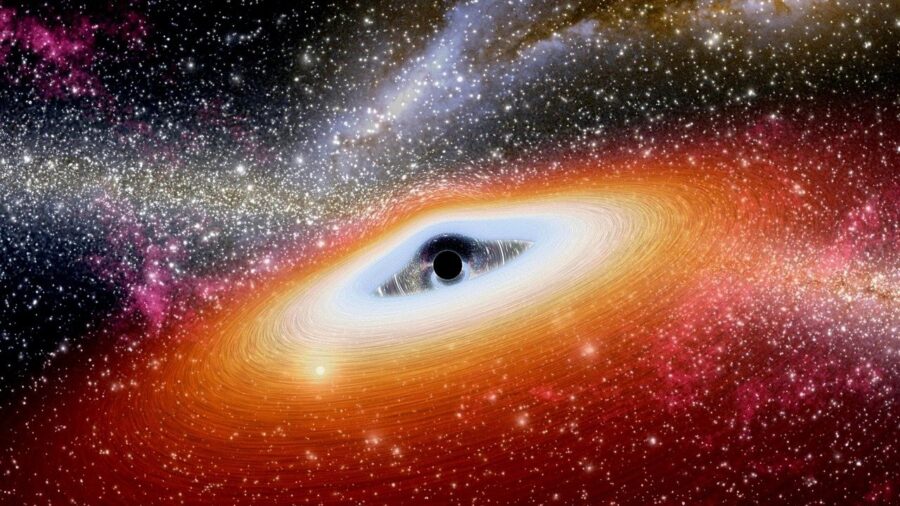Watch A Black Hole Swallow A Star In Terrifying Video
You may sometimes feel hungry enough to eat a horse, but how about a star? NASA recently released findings of a black hole in a far-off galaxy that is eating a sunlight star one bite at a time. In what astronomers call a repeated tidal disruption event, the black hole sucks up part of an orbiting star each time the unlucky celestial body passes by.
Piece by piece, a black hole in a distant galaxy consumes a star in rare footage shared by NASA.
As NASA’s video explains above, black holes are insanely dense, giving them gravity more irresistible than Harrison Ford. In the case of Swift J0230, a repeated tidal disruption event in the 2MASX J02301709+2836050 galaxy, gravity is slowly pulling a star apart. Each time the star passes the black hole, gravity makes the star bulge until it rips into a stream of gas that the black hole devours.
Each bite the black hole takes makes Galactus look like a child who won’t finish his dinner. The black hole is 200,000 times the mass of our sun, and each time the unfortunate star circles it, it consumes a piece equivalent to the mass of three Earths.
Black hole gravity is so great that stars are often swallowed whole. This particular star is just far enough away from the black hole it orbits to avoid such a quick death. Despite its slow consumption, the star is still alive – for now.
The slow consumption of a star via repeated tidal disruption events puts the might of black holes into an awe-inspiring perspective.
The tidal disruption events were captured by NASA’s Swift Observatory. This is not the first time astronomers have observed such a happening, but images from the X-ray telescope system depict a fresh look at the feasting phenomenon.
The Swift Observatory was launched in 2004. According to the official website, Swift’s efforts are to shed light on the gamma-ray burst (GRB) mystery. These bursts are the biggest energy outputs in the universe, trailing only the Big Bang in power. Astronomers are still working to put their finger on what GRBs exactly are.

The bursts could be the formations of black holes, star explosions, or any other host of cosmic occurrences. Whatever they are, the size and intensity of GRBs indicate that they are important. With Swift, scientists inch ever closer to pulling the curtain back on the inner workings of the cosmos.
Continued advancements over the past 20 years have expanded Swift’s capabilities in achieving its goal, but even as it improves, tidal disruption events are easy to confuse with another black hole phenomenon: active galactic nuclei outbursts. Sometimes, supermassive black holes unleash highly energized streams of matter (maybe it’s astro-indigestion?) that register much like a tidal disruption event.
Each bite the black hole takes makes Galactus look like a child who won’t finish his dinner.
NASA’s GRB exploration mission is aided by international participation as the global science community attempts to answer big questions. Along the way, Swift continues to capture fascinating happenings in the far reaches of space, including one hungry, hungry black hole.
The slow consumption of a star via repeated tidal disruption events puts the might of black holes into an awe-inspiring perspective. Thanks to Swift, we have a new look at just how powerful – and hungry – a black hole can be.












